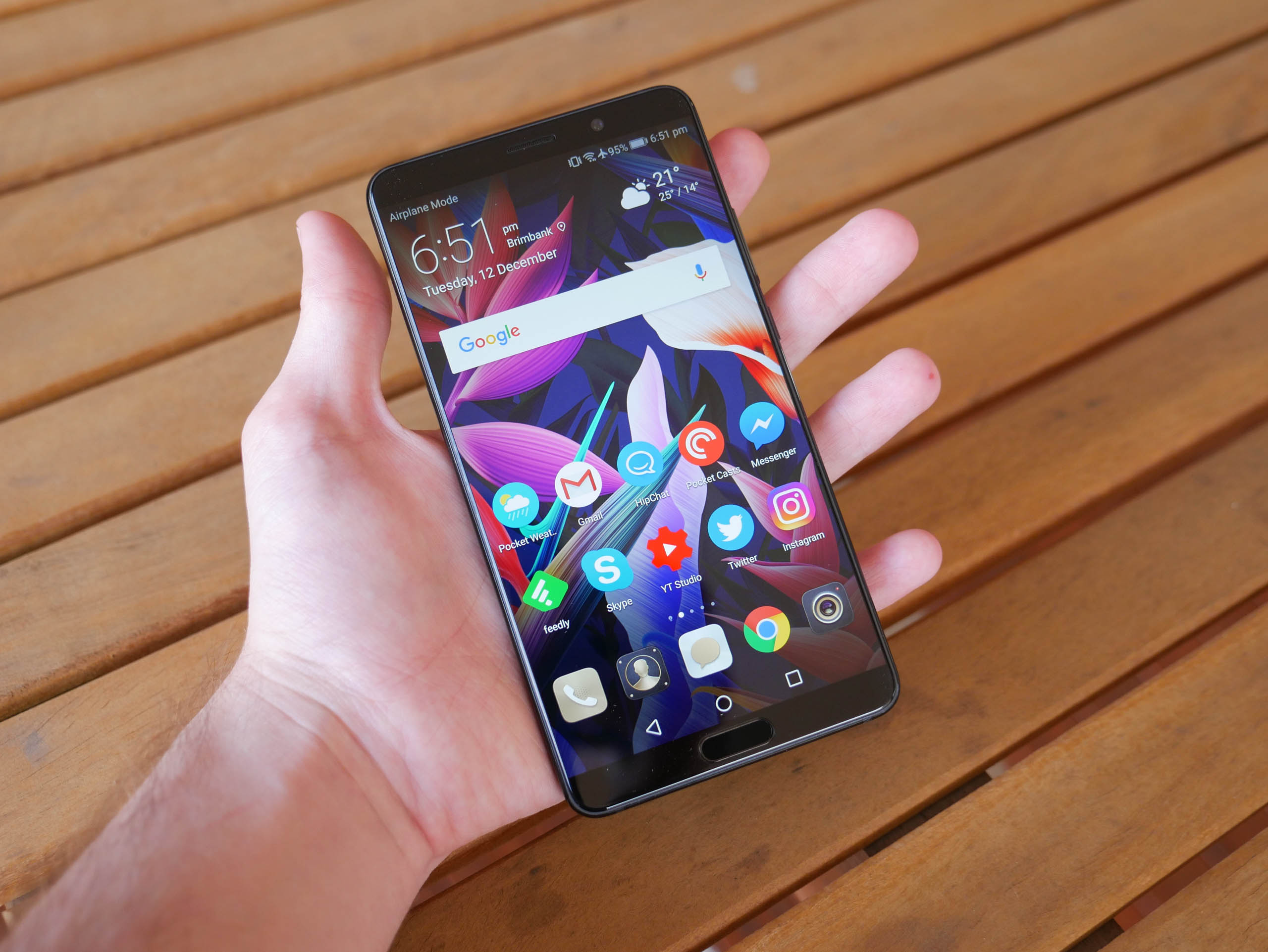Hardware Overview and System Performance
The key new piece of hardware found in the Huawei Mate 10 is the HiSilicon Kirin 970, a brand new SoC from Huawei's semiconductor division that raises the bar significantly compared to the Kirin 960 we saw in devices like the Mate 9 and P10.
The key addition to the Kirin 970 is the Neural Processing Unit, or NPU, which is capable of 1.92 TFLOPS of FP16 operations. This is twice as high as the Neural Engine in the Apple A11, allowing the Kirin 970 to process neural network operations at a faster rate in a highly efficient fashion. How the NPU will be used in actual applications remains to be seen, but it is a key component of the Kirin 970.
The Kirin 970's CPU is similar to the Kirin 960, with some minor clock speed changes. There's still eight CPU cores inside, split into two quad-core clusters: the high-performance ARM Cortex-A73 cluster clocked at 2.40 GHz, and the efficient Cortex-A53 cluster clocked at 1.80 GHz. Relative to the Kirin 960, this is a mere 40 MHz clock speed increase on the A73 cores, and a 40 MHz decrease on the A53s. Expected performance here is basically identical.
As for the GPU, the Kirin 970 packs a much larger GPU that should come closer to the Adreno 540 in the popular Qualcomm Snapdragon 835. The Kirin 970 uses an ARM Mali-G72MP12 clocked up to 850 MHz, which provides an additional 4 cores over the Mali-G71MP8 in the Kirin 960. The SoC still supports UFS 2.1 storage, and aspects such as the dual 14-bit ISP and video encode/decode engine appear unchanged.
One area HiSilicon has beefed up is the integrated modem, which appears to outstrip the Snapdragon X16 in the Snapdragon 835. The Kirin 970's modem supports up to Category 18 LTE for 1200 Mbps downstream, through 3xCA, 256-QAM and 4x4 MIMO. There's also 150 Mbps upstream on 2xCA and 64-QAM.
Outside of the Kirin 970, the Huawei Mate 10 packs 4GB of LPDDR4X RAM and 64GB of internal storage, expandable through the microSD card slot. There's also NFC, Wi-Fi 802.11a/b/g/n/ac and Bluetooth 4.2.
In terms of CPU-bound system performance, I wasn't expecting to see any real difference relative to the Kirin 960 in the Huawei P10. The Kirin 960 already performs quite well in CPU limited workloads as the Cortex-A73 quad-core is very powerful.






However, the Kirin 970 in the Mate 10 does appear to pull around 13 percent ahead of the Kirin 960 in the P10, which could come down to different clock speed profiles and throttling. The Kirin 970 is built on a 10nm process, compared to 16nm for the Kirin 960, so there could be some efficiency advantages for the Kirin 970.
Up against the Snapdragon 835, the Kirin 970 is just slightly slower across our range of system benchmarks, clocking in a mere 4 percent slower. It does outperform the Samsung Exynos 8895 in some Galaxy S8 and Note 8 variants though, to the tune of 23 percent.
Compared to older SoCs, we're seeing a 32 percent improvement over the Kirin 955 in the Huawei P9, which used the older Cortex-A72 CPU architecture. It's 30 percent faster than the Snapdragon 821, and 70 percent faster than the Snapdragon 810.
